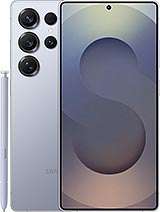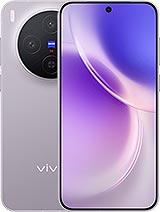Black Friday is approaching fast, but good deals are no longer tied to that one date – some brands and retailers are spreading them around almost the entire month.
We had a major launch this week as the OnePlus 15 went global. In Europe, the base 12/256GB variant is €50 cheaper than the OnePlus 13 was at launch, but the 16/512GB upgrade is now €50 more than it was.
OnePlus made some questionable choices with the hardware. On paper, the camera is worse than it was on the 13. However, we did a OnePlus 13 vs. OnePlus 15 shootout and found that there is a lot to like. Still, the camera could have been so much better with better hardware – great processing alone isn’t enough. Check out our detailed review for more on our thoughts on the OnePlus 15.
The OnePlus 15 will be available from November 20 and it will face competition from the get-go. The vivo X300 Pro chose the Dimensity 9500 over the Snapdragon 8 Elite Gen 5 – both chipsets are quite close in performance. vivo equipped its phone with more serious camera hardware – the 50MP main sensor is 1/1.28” (rather than 1/1.56” like on the OnePlus) and the 3.5x 85mm periscope is backed by a 200MP 1/1.4” sensor (vs. 50MP 1/2.76”).
However, European X300 Pro units have a small 5,440mAh battery (down from 6,510mAh on the Chinese units), while OnePlus maintained the full 7,300mAh capacity for the Euro model. And the difference is huge, the OnePlus 15 achieved nearly double the Active use score (23:07h vs. 12:45h for the X300 Pro). Of course, the vivo X300 Pro is pricier, even with the €150 coupon that you can get right now.
There’s also the Samsung Galaxy S25 Ultra – the H1 2025 flagship has been around for a while, so now its price is at or below the OnePlus 15 price. Having launched early means that the phone uses the now last-gen Snapdragon 8 Elite chip.
While it has a 200MP 1/1.3” main, the S25 Ultra has only a small 50MP 1/2.52” sensor in its 5x/111mm periscope. The 5,000mAh battery with 45W wired and 15W wireless charging was never particularly impressive and it’s even less so now. The vivo and OnePlus support 90W and 120W wired and 40W and 50W wireless charging, respectively.
The Xiaomi 15T Pro is more of a budget flagship – even more so than the OnePlus 15. Its Dimensity 9400+ is no match for the Snapdragon 8 Elite Gen 5 (it’s a 2024 chip, after all), but the camera setup is better positioned to challenge the OnePlus than the 14T Pro was last year.
The 5,500mAh battery with 90W wired and 50W wireless charging doesn’t last as long as the OnePlus 15, though it does outlast the vivo. And as we said, the 15T Pro is €240 cheaper than the OnePlus 15, which could tip the scales in its favor.
Will OnePlus release a small flagship in Europe? Who knows… but vivo did. The vivo X300 is an impressive piece of kit – it’s on the heavy side for a 6.31” phone at 190g. However, the 5,360mAh battery sure feels nice. It’s larger than the S25 Ultra battery! And it lasts longer than the X300 Pro battery.
The X300 has the same Dimensity 9500 chipset as the big X300 Pro but a different camera setup – 200MP 1/1.4” main, 50MP 1/1.95” 3x/70mm periscope and a 50MP 119° ultra-wide.
The Samsung Galaxy S25 is in the same size class in terms of screen dimensions, but it is noticeably lighter at 162g. The downside is that its 4,000mAh battery just doesn’t last as long as the X300 – it’s 13:09h vs. 17:31h in terms of Active use score. Worse, the 50MP 1/1.56” main and 10MP 3x/67mm are worlds apart from what the small vivo has on its back.
The Google Pixel 10 is the first generation vanilla Pixel with a telephoto camera – it’s only a 10.8MP unit, but the 5x/112mm lens gives it a leg up over the Samsung if not the vivo. The small 1/2.0” 48MP sensor in the main is a downgrade from the previous model, though, while the Tensor G5 is not a significant upgrade from it. Efficiency is low with a 4,970mAh battery lasting an hour less than the S25 (12:08h Active use score).
Despite their flaws, the Pixels charge high prices – the vanilla Pixel 10 is more expensive than the Galaxy S25, the Pixel 10 Pro costs even more. The Pro does have a large 1/1.31” 50MP sensor for its main camera and a more competitive 48MP 5x/113mm telephoto camera, but its chipset and battery life still aren’t great.
Note: if you go for the 256GB Pixel 10 Pro, you can pay €20 extra for a pair of Google Pixel Buds Pro 2, which is definitely worth it in our opinion as they are capable (if flawed) TWS buds.
Similarly, the Google Pixel 9 comes with a free pair of Pixel Buds, though they are the cheaper 2a model. Still, you can’t beat free. Anyway, the Pixel 9 has a 50MP main camera with a large 1/1.31” sensor and a high-resolution 48MP ultra-wide (vs. 13MP on the Pixel 10). How much are you going to miss that 10.8MP 5x telephoto camera? Because the difference between the Tensor G4 and G5 isn’t huge.
You can have the Google Pixel 9a for even less cash. This one isn’t competitive with the higher end models, but we’re including it for those who want a 6.3”-class phone but don’t want to spend over €500. Here’s how the Pixel 9a and Pixel 9 compare.
We may get a commission from qualifying sales.







